Wildlife Photolog
By Ajay Jain
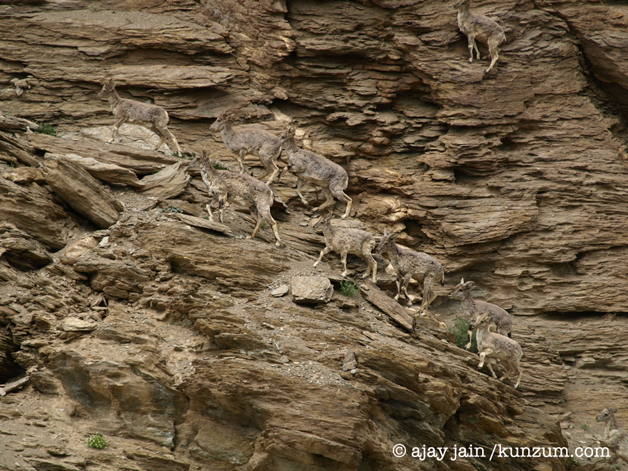
Tibetan Argalis in the Changthang Eco Zone in Ladakh
As you drive towards Pangong Tso and Tso Moriri, you enter the Changthang Eco Zone. It is an extension of Changthang, the Northern Tibetan Plateau, and covers about 15,000 square km (5,800 square miles). The elevation varies from 13,000 – 23,000 feet (about
4,000 – 7,000 metres) and the region is dotted by wide valleys amidst rolling hills and the occasional mountain lake. It is a cold desert that gets very little rainfall and very high solar radiation. Summer temperatures range from 0°C to 30°C (32 – 86 degrees
Fahreinheit) but the winter is hostile, with the land freezing over at -20°C to -40°C (68 – 104 degrees below zero Fahreinheit).
The region is strikingly beautiful but very desolate too. You wouldn’t want to be stranded here. There are few permanent human settlements. Much of the population are the nomadic Changpas who pitch tents wherever their livestock find pastures. In Changthang’s
wetlands live many vulnerable and endangered animals such as the Kiang (Tibetan Wild Ass), Tibetan Argali, Blue Sheep, Snow Leopard, Tibetan Wolf and Lynx. They are the only breeding site for the Bar-Headed Geese in India, and the only region outside China
where the highly endangered Black -Necked Cranes breed. Of course, you’ll need a lot of perseverance to spot these creatures.
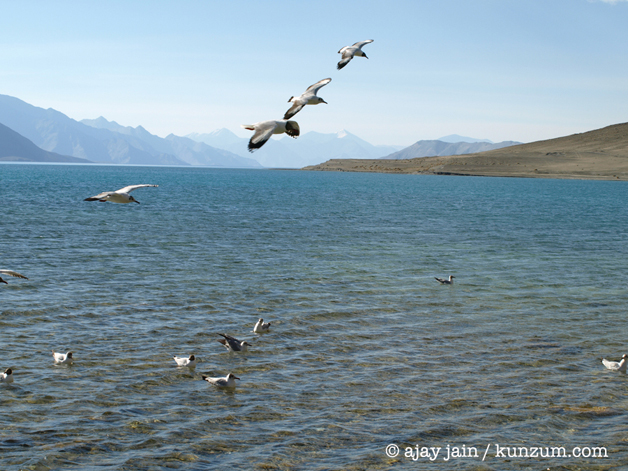
Brown-Headed Gulls flying over the Pangong Tso evoking images of Jonathan Livingstone Seagull
As you descend the 5360 m (17,586 feet) high Chang La (Pass) to get to Pangong Tso (Lake), you see a sign at Durbuk: ‘Welcome to the land of beautiful mountains and blue water lake.’ More signs await you. On a rocky patch, there’s another, ‘Ice hockey, the
sport of Eastern Ladakh, promoted by Army.’ The area is also the world’s highest army habitat it seems; only the sign reads ‘Arty Habitat.’ Creative, eh? I also met Kunchuk, 9, starting his 5 km walk to school, being seen off by his mother, grandfather and
baby brother Phunsuk. The family subsists on a meagre agricultural income but they are always smiling, and Kunchuk just loves going to school.
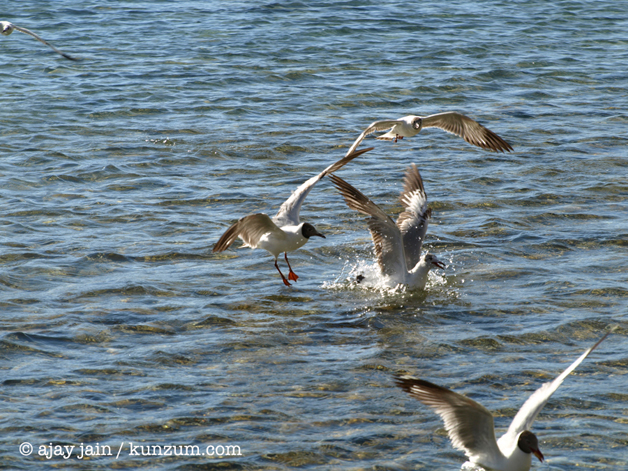
Brown-Headed Gulls frolicking in the Pangong Tso (Lake)
A little further on a rough strip of road, my car tyre ripped. And I still had the infamous Pagal Nala (‘mad stream’) to negotiate. It’s slippery and treacherous; you have to drive across it on tenterhooks. One wrong move and you’ll need a crane to pull you
out. In the middle of nowhere. Cross it before noon because the sun melts the ice later in the day and the slush is hell to drive on. But I made it. And just the first view of the gorgeous glacial lake was more than worth it.
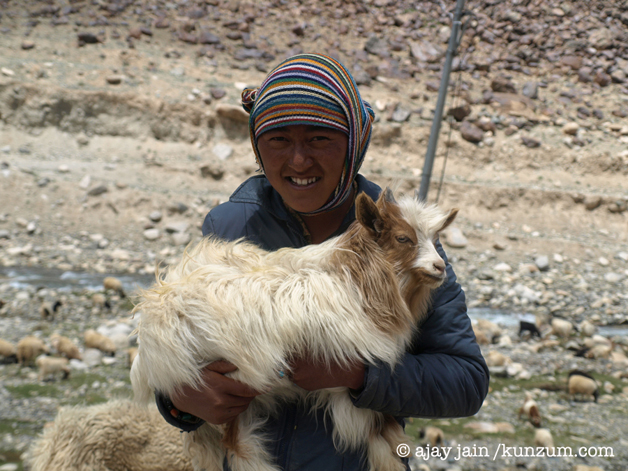
A young nomadic Changpa girl near Pangong Tso
The Perfect Blue
An endless blue awaits guarded by mountains on either side. The welcome party comprises Brownheaded Gulls, the Larus Brunnicephalus, hovering about on the most exquisite lake you would have ever seen. Just throw a few bread crumbs or biscuit bits and dozens
more gulls will materialise like magic. Every bit of biscuit I threw in evoked a flurry of flapping, waddling, jostling and even pecking to get to the ‘worm.’ Those flying overhead would swoop in and add to the commotion. And yet, some others would just wade
about with the peaceful countenance of the Buddha. Evolved sense of dignity or just full tummies?
The gulls in flight conjure up images of Jonathan Livingstone Seagull. This species flies pretty low over the water in direct purposeful flight, with low wing beat and frequent gliding. They might go for the occasional biscuit but their regular diet is much
healthier, comprising fish, insects, slugs and green shoots. You find these gulls at Tso Moriri and Tso Kar too in the summer, and westwards along the Indus valley during their spring and autumn migrations.
Playing with Himalayan Marmots
On the way back, keep an eye out for Himalayan Marmots, just the pets to cuddle up with in Ladakh’s sub-zero climes. These cousins of squirrels flee at the slightest hint of humans. But a ‘greedy’ group is always willing to throw caution to the winds – in return
for a treat of bananas and nuts. Tummies filled, they were quite friendly and snuggled up to my legs. They were also rather romantic and much Marmot-mushiness ensued. For six months starting October, Marmots hibernate. Huddled together in hay-covered burrows,
they halve their 8 kg body weight in this period. If only weight loss was so easy for all of us.
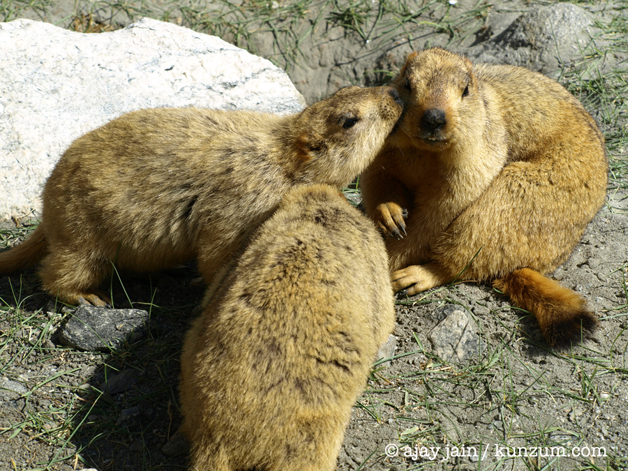
Himalayan Marmots in a romantic mood near the Pangong Tso (Lake)
(Ajay Jain is a travel writer and photographer and shares his stories on www.kunzum.com. He can be contacted at ajay@ajayjain.com)
|